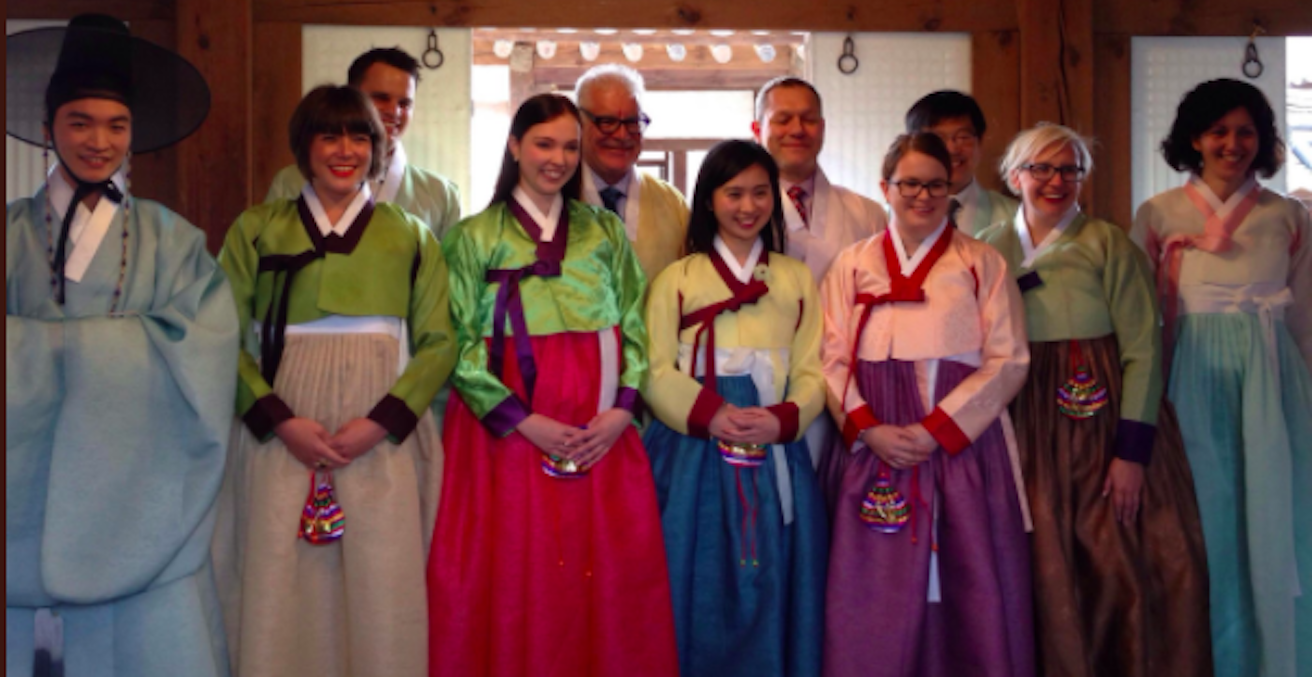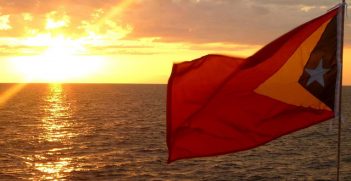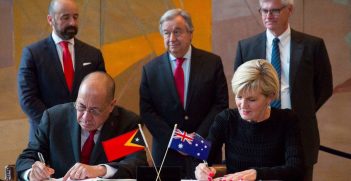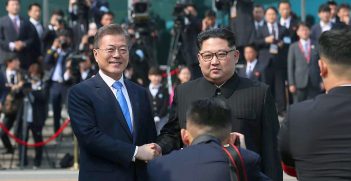Why South Korea's Foreign Policy Should Matter to Australia

The relationship between Australia and South Korea has been mostly focused on economics, but there is room for both states to improve diplomatic and defence ties, particularly given their shared strategic interests and political values.
Australia’s 2017 Foreign Policy White Paper identified the Indo-Pacific democracies of Japan, Indonesia, India and the Republic of Korea as states of “first order importance” to Australia and the region. But while Indonesia, India and Japan often feature in commentaries on Australian foreign policy, less is made of South Korea and Australia’s bilateral relationship.
Shared interests
Like Australia, South Korea is a highly developed, middle power democracy in East Asia. Both states share some common political attributes that shape their strategic, economic and normative interests in international relations.
Strategically, South Korea and Australia are caught in a similar dilemma in the contest of the evolving regional balance of power dynamics.
Both states are formally allied with the United States, yet their number one trading partner is China. Like Australia, South Korea’s economy has benefited substantially from the rise of China since a normalisation of relations in 1992. Consequently, both Australia and South Korea are experiencing similar issues in balancing their relations with the great powers, including how to manage and accommodate the rise of China while simultaneously encouraging the United States to retain its presence in the region.
Economically, South Korea is an important partner for Australia in the Indo-Pacific. It is Australia’s fourth-largest two-way trading partner, and they negotiated a free trade agreement (KAFTA) in 2014. They share common economic interests as members of the G20, the East Asia Summit (EAS), Asia-Pacific Economic Cooperation (APEC), and MIKTA (Mexico, Indonesia, Korea, Turkey and Australia).
Australia and South Korea are also grouped together as ‘like-minded countries’. They share a common interest in maintaining the so-called ‘liberal international rules-based order’ that has underpinned their security and prosperity in the post-Cold War period.
Yet the big difference between Australia and South Korea is geopolitical. The pace of change on the Korean peninsula—from nuclear tests in 2017 to summit talks in 2018—have left all states in the region madly scrambling to forecast what might happen in the context of an increasingly unpredictable security environment, recently compounded by Kim Jong Un’s visit to China.
Both Australia and South Korea share a common interest in the peaceful denuclearisation of North Korea, and the upcoming summit talks between South Korea and North Korea in April, and between the US and North Korea in May, are significant for all parties in the region.
But there is no doubt that South Korea is at a critical juncture in terms of its national security; while Australia was directly threatened by North Korea in October 2017, and thus has a stake in the upcoming summits, this is nothing compared to the existential threats faced by South Korea by virtue of its geographic location.
There are a mix of views in the South Korean foreign policy community about whether dialogue is likely to be useful, especially given that in the past, talks have failed to arrest North Korea’s nuclear ambitions. While some South Koreans express tentative optimism that dialogues might lead to a moratorium on North Korea’s nuclear program, conservative commentators express concern that Seoul or Washington will compromise on the ‘maximum pressure’ sanctions in order to strike a deal with Pyongyang.
Whether denuclearisation means the same thing to all parties is doubtful, but Australia interprets denuclearisation through the ‘CVID’ lens, meaning Complete, Verifiable and Irreversible Dismantlement. South Korea appears to be hoping for North Korea to halt the nuclear program as a short-term step in the much longer-term goal of achieving CVID and the peaceful unification of the Korean peninsula. Whether North Korea views denuclearisation the same way is highly doubtful.
And although the summits have necessarily garnered considerable media attention in Australia, less is known about the other foreign policy priorities of the new Moon administration.
Diversifying foreign policy
For Australia and South Korea, a key priority is managing the rising uncertainties in a region characterised by the destabilising features of a rising China and the potential decline of the United States. For South Korea, this particular balancing act came to the fore in 2017, when China applied informal economic sanctions against South Korea in retaliation for its deployment of the Terminal High Altitude Area Defense (THAAD) system. According to those in the South Korean foreign policy community, these actions reinforced to the Moon administration that South Korea’s economy was too dependent on Chinese customers, and that South Korea needed to protect its economy by diversifying its diplomatic profile.
South Korea subsequently initiated a ‘New Southern policy’ focusing on deepening relations with the member states of the Association of South East Asian Nations (ASEAN), as well as India.
This is similar to Australia’s recent efforts to diversify its foreign policy approach by looking towards ASEAN and India. Its efforts to court ASEAN were on full display during the ASEAN-Australia special summit, held on 17–18 March in Sydney. For Australia, the strategic backdrop to this diversification is the ‘Indo-Pacific’ concept. For Australia, the Indo-Pacific concept extends the Asia-Pacific westward, incorporating India. This is particularly important given India’s status as a large democratic Asian state.
The Indo-Pacific concept correlates with efforts to reinvigorate the Quadrilateral Security Dialogue (the ‘Quad’) between the US, Japan, India and Australia.
Of particular concern for both South Korea and Australia is China’s responses to their efforts to diversify their foreign policy approaches as they seek to balance economic and strategic imperatives. South Korea’s ‘New Southern’ policy mirrors its ‘New Northern’ policy, designed to expand cooperation with China, Russia, Mongolia and Japan. This dual policy helps mitigate any sense that the ‘New Southern’ policy is an anti-China strategy.
The Indo-Pacific and Quad strategies, on the other hand, are interpreted as an effort to counter China’s deployment of geo-economic statecraft tools, such as the Belt and Road Initiative. China’s foreign minister was recently reported as having ‘mocked’ Australia and the US for the use of the Indo-Pacific concept to describe the region, and to have criticised the re-emergence of the Quad. While the official rhetoric from the four states is that the Quad is not aimed at any one state, there is a view that it a containment strategy directed at China.
The general tone from the South Korean foreign policy community towards the Indo-Pacific concept appears to be one of scepticism, even though the United States has also recently begun referring to the ‘Indo-Pacific’ rather than ‘Asia-Pacific’. Similarly, there is scepticism in South Korea about the ‘Quad’. While there are talks about expanding the political base of the Quad to include Singapore (‘Squad’) and New Zealand (‘Squadz’), South Korea appears dubious about the dialogue. One reason for this might be South Korea’s fractious relationship with Japan, which has long been plagued by historical and nationalist grievances over comfort women, history textbooks and the Dokdo/Takeshima maritime dispute.
These foreign policy initiatives—the New Southern policy, the Quad, and the Indo-Pacific—are all still in nascent stages of development. What seems clear is that both South Korea and Australia are making efforts to diversify foreign policy away from their major security and economic partners. The concepts and policies they are developing overlap conceptually, but in operation they are heading down distinctive paths. Rather than working with separate ideas, Australia and South Korea—and other ‘like-minded’ states—should work toward developing inclusive, multilateral regional institutions and dialogues that can enable these states to share the burden of managing the risks that stem from increased uncertainty in the region.
Dr Rebecca Strating is a lecturer in Politics at La Trobe University. Her article “Timor-Leste’s foreign policy approach to the Timor Sea disputes: pipeline or pipe dream?” was recently announced as the winner of the Boyer Prize for best article published in the Australian Journal of International Affairs in 2017.
This article is published under a Creative Commons Licence and may be republished with attribution.





